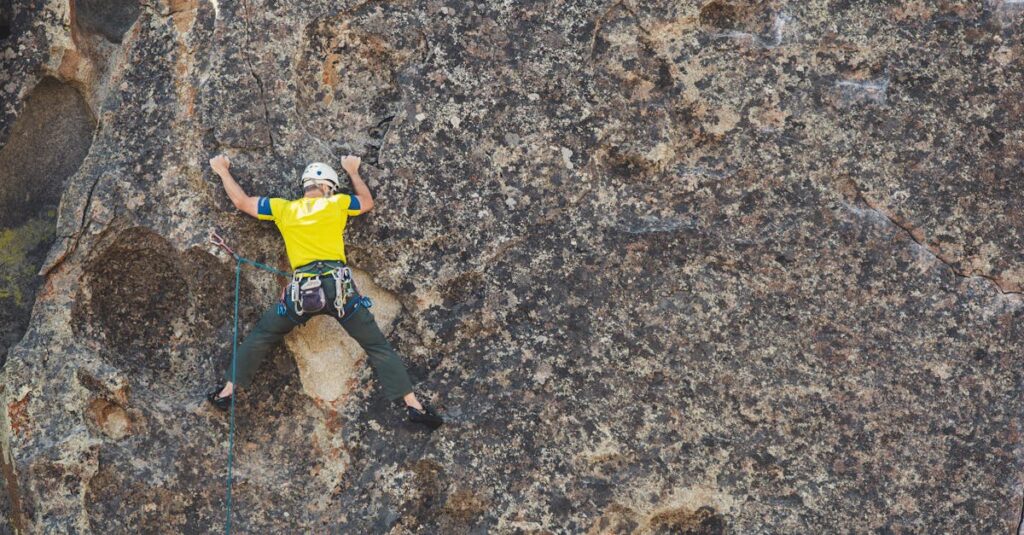Climbing is more than just a sport—it’s a lifestyle, a challenge, and an adventure all rolled into one. Whether you’re scaling indoor walls, tackling boulders, or taking on towering mountains, the right approach, techniques, and gear can make all the difference. In this guide, we’ll explore the essentials, from beginner-friendly tips to expert strategies, plus the best gear recommendations to keep you safe and efficient on your climbs.
Why Climbing? The Thrill of the Ascent
Climbing is a unique blend of physical and mental endurance. Unlike other workouts, it demands strength, flexibility, balance, and problem-solving skills. The exhilaration of reaching the top, the camaraderie among climbers, and the constant push to improve make it an addictive and rewarding activity.
The Different Types
Understanding the different styles of climbing is crucial for choosing your path:
- Indoor – Perfect for beginners, it offers controlled conditions and routes designed for training.
- Bouldering – Involves shorter walls or rock formations without ropes but with crash pads for safety.
- Sport – Involves climbing with pre-placed anchors and ropes, emphasizing endurance and technique.
- Traditional (Trad) – Requires placing your own protection as you climb, demanding advanced technical skills.
- Alpine & Ice – For the most adventurous, this involves scaling frozen waterfalls or snowy peaks with specialized gear.
Essential Gear
Having the right equipment is key to a safe and enjoyable climb. Here are some must-have climbing essentials:
- Climbing Shoes – Precision and grip are crucial; pick a pair that suits your climbing style.
- Harness – A comfortable, adjustable harness is a must for rope climbing.
- Chalk & Chalk Bag – Keep your hands dry to maintain grip.
- Helmet – Protect yourself from falling debris and unexpected falls.
- Belay Device – Essential for sport and trad climbing for controlled descents.
- Ropes & Carabiners – Choose dynamic ropes for sport climbing and ensure your carabiners are rated for climbing loads.
- Crash Pads – If bouldering, a quality crash pad can help prevent injuries.
Techniques for Every Level
Mastering technique is just as important as having strength. Here are a few fundamental techniques to refine your skills:
- Footwork – Precise foot placement can save energy and prevent slipping.
- Body Positioning – Keeping your body close to the wall improves balance and stability.
- Grip Types – Learn different holds like crimps, slopers, and jugs to tackle various routes.
- Breathing & Focus – Staying calm and breathing properly helps maintain endurance and confidence.
Training Tips
Training off the wall is just as important as practice on it. Consider these key exercises to boost your ability:
- Grip Strength Training – Hangboard workouts and finger exercises will improve your hold on tough routes.
- Core Strength – A strong core helps maintain body tension and balance.
- Flexibility & Mobility – Yoga and stretching can improve reach and prevent injuries.
- Endurance Workouts – Cardio and circuit training can increase your climbing stamina.
Safety Tips Everyone Should Know
Climbing is thrilling, but safety should always come first. Keep these key safety measures in mind:
- Double-check your gear before every climb.
- Communicate with your belay partner to ensure smooth coordination.
- Learn how to fall properly to minimize injuries.
- Respect climbing grades and don’t push beyond your skill level too quickly.
- Stay hydrated and warm up before tackling challenging routes.
Best Destinations Worldwide
If you’re ready to take your climbing to new heights, here are some bucket-list destinations:
- Yosemite National Park, USA – Home to legendary big wall climbs like El Capitan.
- Fontainebleau, France – A bouldering paradise with endless routes.
- Kalymnos, Greece – World-famous limestone sport climbing with stunning views.
- Rocklands, South Africa – A dream destination for boulderers.
- Squamish, Canada – A haven for trad climbers with breathtaking scenery.
Final Thoughts:
No matter your level, climbing is an ever-evolving journey. Keep pushing your limits, stay safe, and most importantly—enjoy the climb. Ready to start your adventure? Grab your gear and get climbing!


Pingback: History of Sport Climbing: From Origins to Modern Day - gearyourgrip